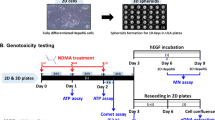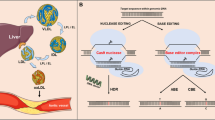Abstract
Purpose
Recent studies suggest that polymorphisms in human carbonyl reductase 3 (CBR3) influence the pharmacodynamics of doxorubicin. First, we sought to identify the promoter of CBR3. Next, we examined whether two CBR3 promoter polymorphisms (CBR3 -725T>C and CBR3 -326T>A) dictate promoter activity and hepatic CBR3 mRNA levels.
Methods
The promoter activities of CBR3 reporter constructs were investigated in HepG2 and MCF-7 cells. CBR3 mRNA levels were documented in 95 liver samples from white (n = 62) and black (n = 33) donors. Genotype-phenotype correlation analyses were used to determine the impact of the CBR3 -725T>C and CBR3 -326T>A polymorphisms on hepatic CBR3 mRNA levels.
Results
We identified the promoter of human CBR3. Liver samples from black donors showed higher relative CBR3 mRNA levels than samples from whites (CBR3 mRNAblacks = 3.0 ± 3.1 relative fold vs. CBR3 mRNAwhites = 1.6 ± 1.5 relative fold, p = 0.021). The variant -725C and -326A alleles did not modify the gene reporter activities of engineered CBR3 promoter constructs. In line, hepatic CBR3 mRNA levels were not associated with CBR3 -725T>C and CBR3 -326T>A genotype status.
Conclusions
These studies provide the first insights into the regulation and variable hepatic expression of polymorphic CBR3.





Similar content being viewed by others
Abbreviations
- AHR:
-
aryl hydrocarbon receptor
- AIM:
-
ancestry informative markers
- AP1 or JUN:
-
activator protein 1
- CBR1 :
-
Carbonyl reductase 1
- CBR3 :
-
Carbonyl Reductase 3
- CBR4 :
-
Carbonyl reductase 4
- CHF:
-
congestive heart failure
- CI:
-
confidence interval
- OCT-1 or POU2F1:
-
octamer binding transcription factor 1
- PCR:
-
polymerase chain reaction
- SNP:
-
single nucleotide polymorphism
- SP1:
-
Sp1 transcription factor
- XRE:
-
xenobiotic response elements
REFERENCES
Matsunaga T, Shintani S, Hara A. Multiplicity of mammalian reductases for xenobiotic carbonyl compounds. Drug Metab Pharmacokinet. 2006;21:1–18.
Rosemond MJ, Walsh JS. Human carbonyl reduction pathways and a strategy for their study in vitro. Drug Metab Rev. 2004;36:335–61.
Forrest GL, Gonzalez B. Carbonyl reductase. Chem Biol Interact. 2000;129:21–40.
Minotti G, Menna P, Salvatorelli E, Cairo G, Gianni L. Anthracyclines: molecular advances and pharmacologic developments in antitumor activity and cardiotoxicity. Pharmacol Rev. 2004;56:185–229.
Fan L, Goh BC, Wong CI, Sukri N, Lim SE, Tan SH, et al. Genotype of human carbonyl reductase CBR3 correlates with doxorubicin disposition and toxicity. Pharmacogenet Genomics. 2008;18:623–31.
Lal S, Sandanaraj E, Wong ZW, Ang PC, Wong NS, Lee EJ, et al. CBR1 and CBR3 pharmacogenetics and their influence on doxorubicin disposition in Asian breast cancer patients. Cancer Sci. 2008;99:2045–54.
Blanco JG, Leisenring WM, Gonzalez-Covarrubias VM, Kawashima TI, Davies SM, Relling MV, et al. Genetic polymorphisms in the carbonyl reductase 3 gene CBR3 and the NAD(P)H:quinone oxidoreductase 1 gene NQO1 in patients who developed anthracycline-related congestive heart failure after childhood cancer. Cancer. 2008;112:2789–95.
Watanabe K, Sugawara C, Ono A, Fukuzumi Y, Itakura S, Yamazaki M, et al. Mapping of a novel human carbonyl reductase, CBR3, and ribosomal pseudogenes to human chromosome 21q22.2. Genomics. 1998;52:95–100.
Covarrubias VG, Lakhman SS, Forrest A, Relling MV, Blanco JG. Higher activity of polymorphic NAD(P)H:quinone oxidoreductase in liver cytosols from blacks compared to whites. Toxicol Lett. 2006;164:249–58.
Gonzalez-Covarrubias V, Zhang J, Kalabus JL, Relling MV, Blanco JG. Pharmacogenetics of human carbonyl reductase 1 (CBR1) in livers from black and white donors. Drug Metab Dispos. 2009;37:400–7.
Blanquicett C, Johnson MR, Heslin M, Diasio RB. Housekeeping gene variability in normal and carcinomatous colorectal and liver tissues: applications in pharmacogenomic gene expression studies. Anal Biochem. 2002;303:209–14.
Bustin SA. Quantification of mRNA using real-time reverse transcription PCR (RT-PCR): trends and problems. J Mol Endocrinol. 2002;29:23–39.
Zamber CP, Lamba JK, Yasuda K, Farnum J, Thummel K, Schuetz JD, et al. Natural allelic variants of breast cancer resistance protein (BCRP) and their relationship to BCRP expression in human intestine. Pharmacogenetics. 2003;13:19–28.
Butler JEF, Kadonaga JT. The RNA polymerase II core promoter: a key component in the regulation of gene expression. Genes Dev. 2002;16:2583–92.
Lakhman SS, Chen X, Gonzalez-Covarrubias V, Schuetz EG, Blanco JG. Functional characterization of the promoter of human carbonyl reductase 1 (CBR1). Role of XRE elements in mediating the induction of CBR1 by ligands of the aryl hydrocarbon receptor. Mol Pharmacol. 2007;72:734–43.
Wierstra I. Sp1: emerging roles–beyond constitutive activation of TATA-less housekeeping genes. Biochem Biophys Res Commun. 2008;372:1–13.
Olson RD, Mushlin PS, Brenner DE, Fleischer S, Cusack BJ, Chang BK, et al. Doxorubicin cardiotoxicity may be caused by its metabolite, doxorubicinol. Proc Natl Acad Sci U S A. 1988;85:3585–9.
Olson LE, Bedja D, Alvey SJ, Cardounel AJ, Gabrielson KL, Reeves RH. Protection from doxorubicin-induced cardiac toxicity in mice with a null allele of carbonyl reductase 1. Cancer Res. 2003;63:6602–6.
Forrest GL, Gonzalez B, Tseng W, Li X, Mann J. Human carbonyl reductase overexpression in the heart advances the development of doxorubicin-induced cardiotoxicity in transgenic mice. Cancer Res. 2000;60:5158–64.
Krischer JP, Epstein S, Cuthbertson DD, Goorin AM, Epstein ML, Lipshultz SE. Clinical cardiotoxicity following anthracycline treatment for childhood cancer: the pediatric oncology group experience. J Clin Oncol. 1997;15:1544–52.
Grenier MA, Lipshultz SE. Epidemiology of anthracycline cardiotoxicity in children and adults. Semin Oncol. 1998;25:72–85.
ACKNOWLEDGEMENTS
The technical assistance of Erick Vasquez and Sukhwinder Lakhman is gratefully acknowledged.
This work was supported by NIH/NIGMS grant GM73646 to JGB. Genotype and phenotype datasets will be available at the PharmGKB database (http://www.pharmgkb.org).
Author information
Authors and Affiliations
Corresponding author
Rights and permissions
About this article
Cite this article
Zhang, J., Blanco, J.G. Identification of the Promoter of Human Carbonyl Reductase 3 (CBR3) and Impact of Common Promoter Polymorphisms on Hepatic CBR3 mRNA Expression. Pharm Res 26, 2209–2215 (2009). https://doi.org/10.1007/s11095-009-9936-9
Received:
Accepted:
Published:
Issue Date:
DOI: https://doi.org/10.1007/s11095-009-9936-9




